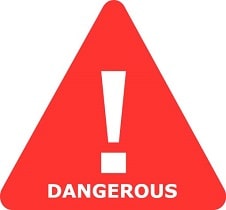Artra Skin Tone For Normal Skin | Hydroquinone, Homosalate, Oxybenzone Cream while Breastfeeding

What is Artra Skin Tone For Normal Skin | Hydroquinone, Homosalate, Oxybenzone Cream ?
Brief: Sunscreen Skin Lightener Sunscreen
Is using Artra Skin Tone For Normal Skin | Hydroquinone, Homosalate, Oxybenzone Cream safe or dangerous while breastfeeding?

Artra Skin Tone For Normal Skin | Hydroquinone, Homosalate, Oxybenzone Cream Breastfeeding Analsys
Hydroquinone while Breastfeeding
Low RiskCAS Number: 123-31-9
Benzene derivative which is topically used with creams and solutions (2-4%) as a bleaching agent for several skin disorders associated to hyper-pigmentation. In industry it is used as photographic developer. TLV or threshold limit value which means maximum exposure limit for workers is 2 mg / m3 (Flickinger 1976). At latest update relevant published data were not found on excretion into breast milk. It is well absorbed through the skin, both when used as a therapeutic agent (Bucks 1998, Wester 1998, Westerhof 2005, Andersen 2010, Bozzo 2011) or industrial use (Barber 1995, McGregor 2007), however, a significant excretion into breastmilk is not likely for their lack of fat solubility. There is controversy and doubt about a possible mutagenic and carcinogenic effect (Kooyers 2004, FDA 2006, Levitt 2007, Andersen 2010), so it does not seem wise a chronic or continued use while breastfeeding. Do not apply it on the breast to prevent ingestion by the infant; otherwise, do it just after a meal and clean the nipple thoroughly with water before the next feed.Do not apply it over large areas or on long-term treatments to avoid an excessive systemic absorption.
Artra Skin Tone For Normal Skin | Hydroquinone, Homosalate, Oxybenzone Cream Breastfeeding Analsys - 2
Hydroquinone while Breastfeeding
CAS Number: 123-31-9
Topical hydroquinone has not been studied during breastfeeding. Hydroquinone is not contraindicated during breastfeeding and if hydroquinone is required by the mother, it is not a reason to discontinue breastfeeding. However, some experts feel that long-term use of hydroquinone is difficult to justify in a nursing mother.[1] If hydroquinone is used, ensure that the infant's skin does not come into direct contact with the areas of maternal skin that have been treated and the infant does not ingest the product from the mother's skin.
Artra Skin Tone For Normal Skin | Hydroquinone, Homosalate, Oxybenzone Cream Breastfeeding Analsys - 3
Homosalate and Breastfeeding
UnsafeHomosalate has been found in mothers milk, its skin penetration rate is less than 1% in human and laboratory studies. Some studies suggest that Homosalate disrupts estrogen, androgen and progesterone levels. As not much study has been done on effects of Homosalate during breast feeding its recommended to use safe alternatives.
Note: Study and data for tropical use onlyWarning: Tropical usage in breast area shall be avoided to prevent the Homosalate passing orally in Infants.
Oxybenzone and Breastfeeding
DangerousOxybenzone has been found in mother�s milk. And has relatively high 1% to 9% skin penetration in lab studies. Oxybenzone has relatively high rates of skin allergy, it has weak estrogen like effects, and its observed as moderate anti-androgen. Oxybenzone is associated with altered birth weight in human studies. It is not recommended to use Oxybenzone during breast feeding.
Note: Study and data for tropical use only.Warning: Tropical usage in breast area shall be avoided to prevent the Oxybenzone passing orally in Infants.
What should I do if I am breastfeeding mother and I am already exposed to Artra Skin Tone For Normal Skin | Hydroquinone, Homosalate, Oxybenzone Cream?
You should immediately inform your health care provider about Artra Skin Tone For Normal Skin | Hydroquinone, Homosalate, Oxybenzone Cream usage and your breastfeeding interval after usage of
My doctor has prescribed me Artra Skin Tone For Normal Skin | Hydroquinone, Homosalate, Oxybenzone Cream, what should I do?
Please double check with your doctor if he is aware of your breastfeeding stratus, Ask your doctor if there is any safe alternative of Artra Skin Tone For Normal Skin | Hydroquinone, Homosalate, Oxybenzone Cream. Check with your doctor if you shall temporally stop breastfeeding. You may go for second opinion as well. Still after all of this if your doctor still recommends Artra Skin Tone For Normal Skin | Hydroquinone, Homosalate, Oxybenzone Cream then go for it as they have access on more detailed medical and scientific information and they understand your individual medical situation much better.
If I am using Artra Skin Tone For Normal Skin | Hydroquinone, Homosalate, Oxybenzone Cream, will my baby need extra monitoring?
Extreme level of monitoring required as Artra Skin Tone For Normal Skin | Hydroquinone, Homosalate, Oxybenzone Cream could be dangerous for kid.
Who can I talk to if I have questions about usage of Artra Skin Tone For Normal Skin | Hydroquinone, Homosalate, Oxybenzone Cream in breastfeeding?
US
National Womens Health and Breastfeeding Helpline: 800-994-9662 (TDD 888-220-5446) 9 a.m. and 6 p.m. ET, Monday through Friday
UK
National Breastfeeding Helpline: 0300-100-0212 9.30am to 9.30pm, daily
Association of Breastfeeding Mothers: 0300-330-5453
La Leche League: 0345-120-2918
The Breastfeeding Network supporter line in Bengali and Sylheti: 0300-456-2421
National Childbirth Trust (NCT): 0300-330-0700
Australia
National Breastfeeding Helpline: 1800-686-268 24 hours a day, 7 days a week
Canada
Telehealth Ontario for breastfeeding: 1-866-797-0000 24 hours a day, 7 days a week
